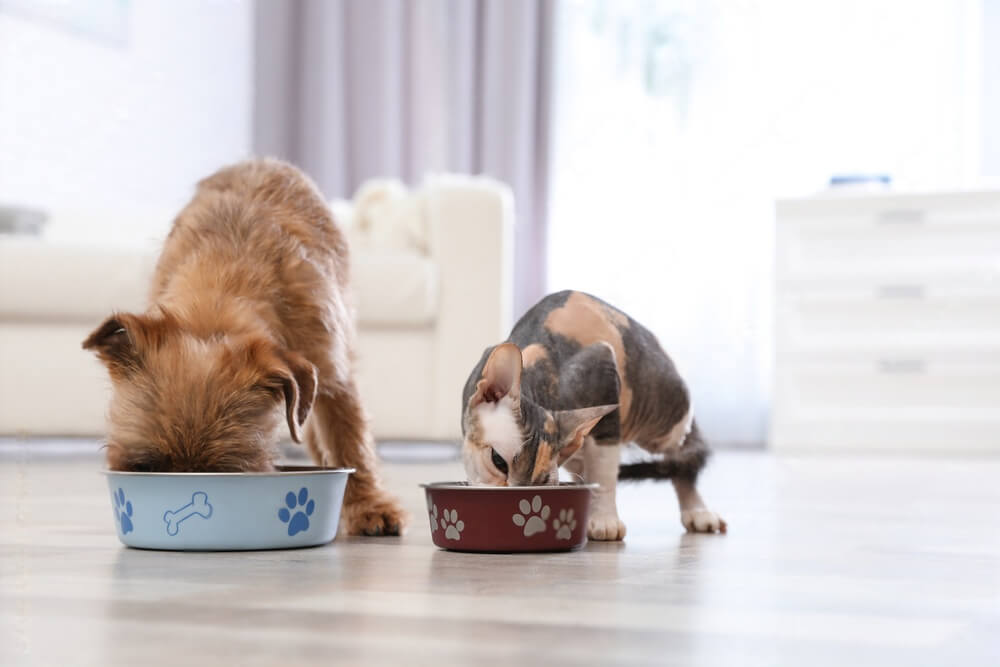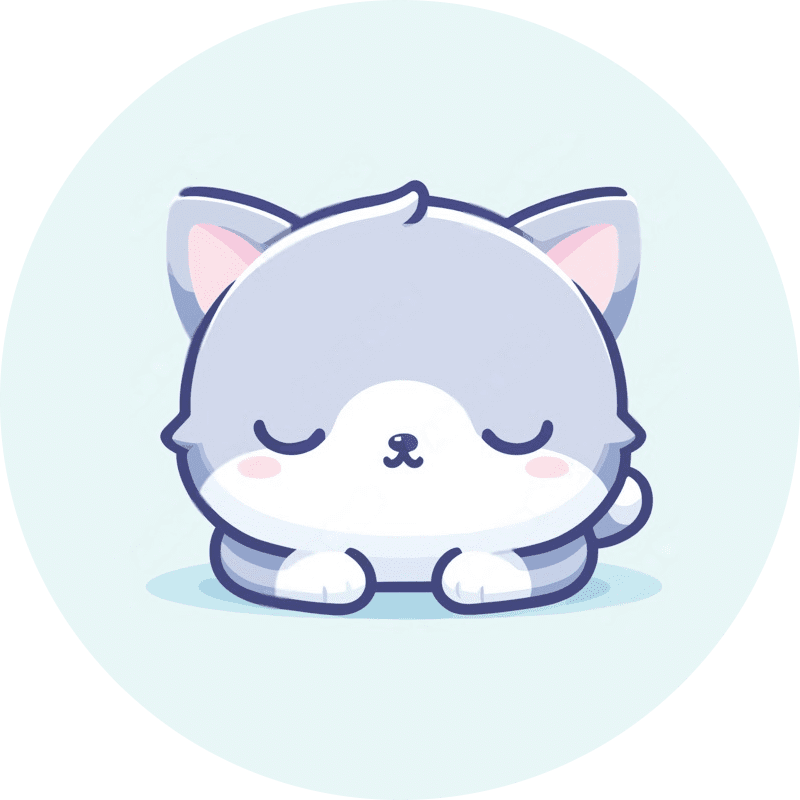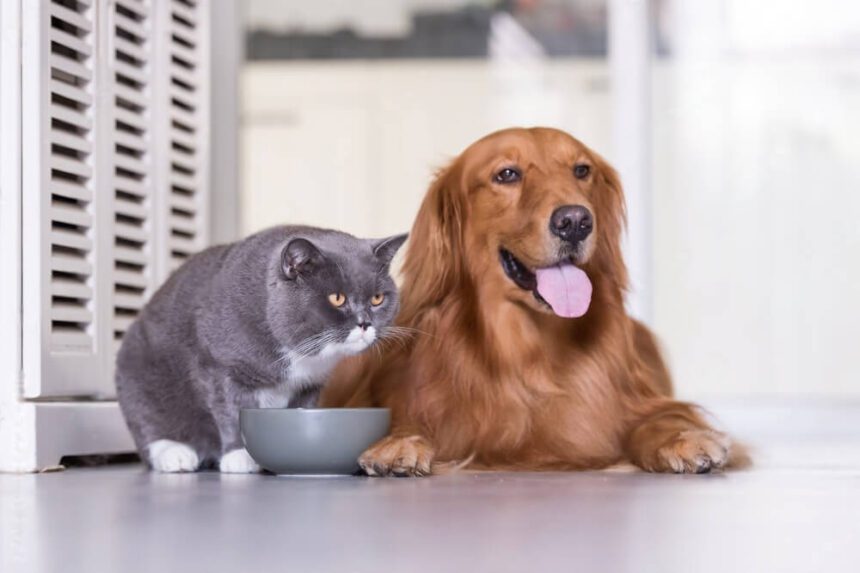So, you’ve got a dog and a cat. They might be best buddies, or perhaps they tolerate each other. Either way, when it comes to meal times, things can get tricky. If you’ve been pondering the question, “Where to put cat food with dog around?” you’re not alone. Finding the perfect spot for your cat’s food where your dog won’t get to it can feel like a puzzle.
And, it’s not just about keeping your dog’s paws out of the cat’s dinner (though that’s a big part of it). It’s also about ensuring your cat feels safe and comfortable while munching away. But don’t worry, I’m here to help you solve it.
The Challenge of Feeding Cats and Dogs Together
Feeding a cat and a dog in the same household can be quite a balancing act. Cats and dogs have very different dietary needs and behaviors. Dogs are opportunistic eaters and will gobble up anything that looks or smells like food. Cats, on the other hand, are more finicky and prefer a quiet, secure place to eat.
Why It’s Important to Keep Their Food Separate
Firstly, dogs eating cat food isn’t just a funny nuisance. It’s genuinely bad for them. Cat food is formulated to meet the high protein and fat needs of felines, and it’s just too rich for dogs. On the flip side, cats shouldn’t eat dog food either since it doesn’t provide the right nutrients they need, like taurine.
Moreover, letting your dog chow down on your cat’s food can lead to obesity and digestive issues for the dog. Not to mention, it leaves your cat without their meal, which can make them anxious and hungry.
Cats are notorious for their finicky eating habits. They prefer peace and quiet when dining and may become stressed if they feel threatened or interrupted.
Dogs, on the other paw, are often more relaxed eaters. They tend to be social animals and may not mind sharing their meal space with other pets. However, some dogs can be territorial, so it’s essential to monitor their behavior during mealtime.
Where to Put Cat Food with Dog Around
Here are some tried-and-tested ideas to keep your pets happy and their meals separate.
Option 1: Separate Spaces
This might seem like a no-brainer, but the easiest way to stop your dog from eating your cat’s food is to feed them in completely separate areas. If you have an extra room, that’s perfect. Put your cat’s food in there, and close the door during feeding times.
Pros: This is the ultimate dog-and-cat peacekeeping strategy. Assign separate dining quarters for your pets. Cats can enjoy their privacy without worrying about any canine interruptions.
Cons: You need space for it. Not all homes have the luxury of extra rooms, so this might not be an option for everyone.
Option 2: Elevated Dining
Cats love high places. It gives them a sense of security and a vantage point to survey their domain. Dogs, especially larger ones, can’t reach these high spots. Place your cat’s food on a countertop, a high shelf, or a sturdy cat tree. Not only does this keep the food away from the dog, but it also appeals to your cat’s natural instincts.
Cons: These setups can be pricier, and not all cats take to them immediately. Some may need time to adjust to the new dining experience.
Option 3: Utilizing Pet Gates
If you don’t have an extra room or high places that are safe for your cat to eat, consider using baby gates or pet gates. You can set up a gated area where your cat can eat in peace. Make sure the gate has openings small enough that your dog can’t squeeze through. Some gates even have little cat doors built in, which is super handy.
Pros: They are easy to install and come in various styles, from simple wooden gates to more stylish and modern options. This solution offers a perfect compromise between separate rooms and supervised meals. You can install a gate in the doorway of the room where your cat eats to keep your dog out.
Cons: While pet gates work well for most situations, some determined dogs may figure out how to open them. Be sure to choose a sturdy gate and train your dog to respect the boundaries.
Option 4: Timed Feeding
Another strategy is to feed your pets at different times. Give your cat their food first and let them eat in peace. Once they’re done, you can feed your dog. This reduces the chances of your dog sneaking in to eat the leftovers. A consistent schedule helps both pets know when to expect their meals and can reduce food-related anxiety.
Timed feeders can also be a lifesaver. These gadgets dispense food at specific times, ensuring your cat gets their meal without the dog barging in.
Cons: It can be a hassle to set up and maintain. Plus, it doesn’t address the issue of the cat wanting to graze throughout the day.
Option 5: Supervised Meals
If you’re home during mealtimes and willing to put in the effort, consider supervising your pets as they eat. This means being present during both your cat’s and dog’s feeding times to ensure peace and quiet. Place your cat’s food on a high surface or in a separate room, and keep an eye on your dog. This way, you can ensure that your cat eats their food without any interruptions. Correct any undesirable behavior and reward good behavior with treats.
Cons: It demands your time and attention, which may not be feasible in a busy household.
Option 6: Training
Training your dog to stay away from the cat’s food is essential. Use commands like “leave it” or “stay” to teach them that the cat’s food is off-limits. Consistency is key here. Reward your dog when they obey and redirect their attention when they try to approach the cat’s food.
Option 7: Doggy Distractions
Keep your dog occupied with toys, treats, or puzzle feeders during your cat’s mealtime. This can reduce the temptation to sneak a bite.
Cons: Not all dogs are easily distracted, and it might not work for every situation.
Where Should I Put My Cat Food?
Choosing the right spot for your cat’s food is crucial for their comfort and well-being. Here are some tips:
Quiet and Accessible Spot
Cats prefer eating in quiet, low-traffic areas. Choose a corner of the kitchen or a peaceful room where your cat can eat undisturbed.
Away from Litter Box
Never place your cat’s food near their litter box. Cats are clean animals and prefer a clear separation between their eating and bathroom areas. Aim for a distance of at least a few feet between the two.
Elevated Surface
An elevated surface like a countertop or cat tree is ideal for feeding. It gives your cat a sense of security and keeps the food out of the dog’s reach.
Sturdy Bowl and Mat
Use a sturdy bowl that won’t tip over easily. Placing it on a mat can help keep the area clean and prevent the bowl from sliding around.
Is It OK To Put Cat Food Near Litter Box?
In short, no. It’s not a good idea to put your cat’s food near their litter box. Cats are clean creatures and they prefer their food and bathroom areas to be separate. Placing their food near the litter box can cause stress and make them reluctant to eat.
Separation is Key
Maintain a clear separation between your cat’s eating and bathroom areas. This helps keep them comfortable and ensures they have a pleasant eating experience.
Comfortable Eating Environment
Choose a quiet, low-traffic area for your cat’s food. This makes mealtime more enjoyable for them and reduces any stress or anxiety.
Common Mistakes to Avoid When Managing Cat and Dog Feeding

Now that we’ve covered various strategies for where to put cat food with a dog around, let’s take a closer look at some common mistakes you should steer clear of:
Neglecting Individual Dietary Needs
One of the most significant mistakes pet owners make is assuming that their cat and dog can eat the same food. Cats and dogs have different nutritional requirements, and their diets should reflect that. Always feed them species-appropriate food to ensure they get the right nutrients.
Ignoring Portion Control
Overfeeding can lead to obesity and health problems in both cats and dogs. Measure out the appropriate portion sizes for each pet and stick to a feeding schedule. Avoid free-feeding, where food is left out all day, as it can lead to unhealthy eating habits.
Skipping Regular Vet Checkups
Regular veterinary visits are essential for both cats and dogs. Don’t skip checkups because your pets seem healthy. Routine exams can catch health issues early, allowing for prompt treatment.
Neglecting Hydration
Water is just as crucial as food, so ensure both your cat and dog have access to fresh water at all times. Dehydration can lead to various health problems, so don’t underestimate its importance.
Lack of Training and Supervision
If you opt for supervised meals or use pet gates, ensure you train your dog to respect boundaries and mealtime rules. Lack of training can result in your dog finding creative ways to access the cat’s food.
Not Providing Separate Safe Spaces
In multi-pet households, both cats and dogs should have their own safe spaces. Cats need spots where they can escape from the dog’s presence when they want some alone time. Dogs, on the other hand, should have their designated areas.
Neglecting Socialization
If your cat and dog are not getting along, it’s essential to work on their relationship. Lack of socialization can lead to stress and aggression. Gradual introductions and positive interactions can help them coexist peacefully.
Using Punishment
Never use punishment to deter your dog from accessing the cat’s food. It can create anxiety and aggression issues. Instead, focus on positive reinforcement to reward good behavior.
Inconsistent Feeding Times
Cats are creatures of habit, and they thrive on routine. Inconsistent feeding times can cause stress for your feline friend. Try to stick to a consistent schedule to keep your cat comfortable.
Underestimating Adaptation Time
Some cats may take time to adjust to a new feeding arrangement. Be patient and give them time to acclimate to any changes you make. Don’t be discouraged if it doesn’t work immediately; persistence pays off.
Frequently Asked Questions
Can Dogs Eat Cat Food Occasionally?
While it’s not harmful for a dog to eat a small amount of cat food, it’s not recommended as a regular practice. Cat food lacks the balance of nutrients that dogs need.
Can I Feed My Cat and Dog the Same Type of Protein?
It’s best to consult your veterinarian for specific dietary recommendations. Cats have certain protein requirements that might differ from those of dogs.
What If My Dog Constantly Tries to Eat the Cat’s Food?
Try feeding your pets in separate rooms or using barriers to keep them apart during mealtimes.
Is Wet or Dry Food Better for Cats and Dogs?
Both wet and dry food options can be suitable, but consult your veterinarian to determine which option best meets your pet’s nutritional needs.
Should I Free-Feed My Pets?
Free feeding is not recommended as it can lead to overeating and obesity. Stick to scheduled mealtimes for portion control and better dietary management.
How do I know if my dog is being territorial with the cat’s food?
Dogs may display territorial behavior around food by growling, guarding the cat’s food, or becoming aggressive. Signs of food aggression in dogs can include stiffening, barking, or even snapping. It’s crucial to address this behavior to prevent conflicts during mealtimes.
What should I do if my cat and dog don’t get along during mealtime?
If your cat and dog have conflicts during mealtime, try feeding them in separate spaces or using strategies like timed feedings, supervised meals, or pet gates to ensure a peaceful dining experience for both. Gradual introductions and positive reinforcement can also help them get along better.
What should I do if my cat is a picky eater and refuses to eat near the dog?
Cats can be finicky eaters. If your cat is hesitant to eat near the dog, create a safe and quiet dining environment for them. Experiment with different foods and feeding locations to find what appeals to your cat’s taste.
How do I introduce my cat and dog to a new feeding arrangement?
When transitioning to a new feeding setup, introduce it gradually. Start by placing their food dishes closer together and gradually increasing the proximity over time. Use positive reinforcement to reward calm behavior during mealtimes.
What should I do if my dog figures out how to open the pet gate?
If your dog is adept at opening pet gates, select a sturdy gate that’s more challenging to manipulate. Additionally, work on reinforcing boundaries through training and positive reinforcement to deter your dog from attempting to bypass the gate.
How can I train my dog to respect mealtime boundaries?
Training your dog to respect mealtime boundaries involves using positive reinforcement techniques. Reward your dog for waiting patiently and not attempting to access the cat’s food. Consistency and patience are keys to successful training.
Should I consult a veterinarian or animal behaviorist if my cat and dog have persistent mealtime conflicts?
If conflicts between your cat and dog during mealtimes persist, it’s advisable to seek professional guidance. A veterinarian or animal behaviorist can help diagnose and address underlying issues, ensuring a harmonious environment for your pets.
Conclusion
So, where to put cat food with dog in the house? Ultimately, the best choice depends on your pets’ personalities and your living situation. You might even need to experiment with a few options to see what works best for you and your furry family members.
Remember, the goal is to ensure both your cat and dog feel comfortable, safe, and well-fed. With a little creativity and some trial and error, you’ll find the perfect solution to this age-old dilemma.
In the end, the key is to cater to your pets’ individual needs while maintaining peace and harmony in your home. After all, a happy cat and a contented dog make for a joyful household.
So, there you have it – your guide on where to put cat food with a dog around. We hope this article helps you create a paw-sitively wonderful environment for your beloved pets. If you have any tips or tricks of your own, feel free to share them with us in the comments below!
Happy pet parenting!



